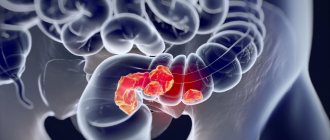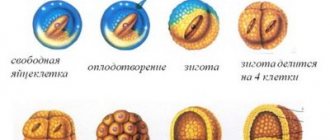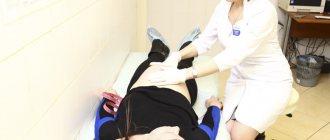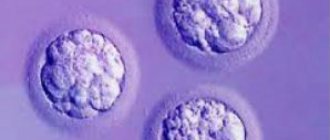Blood pressure is the rate of blood flow through large arteries in the human body, measured in mmHg.
It is divided into two types: diastolic (upper) and systolic (lower). Based on the upper indicator, the pressure of relaxed arteries is determined, and the first criterion depends on the speed of heart contractions. When calculating from systolic blood pressure to distolic blood pressure, pulse pressure is obtained. In adolescents, blood pressure should be about 110*70, in adults under 60 years old 125*85, in elderly people 135*90 mmHg. Art.
Within one day, the human body can experience sudden changes in pressure, which affects its overall well-being. With an increase in the indicator for every 10 mm Hg. the risk of heart and vascular diseases increases.
Causes of high blood pressure
High blood pressure is divided into 2 types:
- primary (essential) hypertension (or hypertension) is the most common type of high blood pressure, often has no cause, develops over many years, the risk increases with age;
- secondary hypertension occurs against the background of the development of any disease (kidneys, endocrine system organs, sleep apnea) or taking certain medications.
Causes of high blood pressure include:
- old age (the older a person is, the higher the likelihood of developing hypertension);
- family history of the disease (high blood pressure in parents or other close relatives);
- unhealthy diet - diet high in salt and fat;
- lack of physical activity;
- overweight, obesity;
- sleep disorders;
- chronic diseases (chronic kidney disease, endocrine disorders, diabetes, high cholesterol);
- race (eg, African Americans have a higher risk);
- gender (in middle age, high blood pressure develops more often in men, in old age - in women; women who had high blood pressure during pregnancy are more prone to arterial hypertension in old age);
- certain medications (contraceptives, decongestants, NSAIDs, antidepressants);
- stress;
- smoking;
- alcohol abuse;
- non-compliance with sleep schedule, night shift work.
High blood pressure is often called the “silent killer” due to its lack of noticeable symptoms. In some cases (especially when blood pressure levels reach dangerously high levels), a person may complain of headache, nosebleeds, and shortness of breath. Many people do not associate these symptoms with abnormal blood pressure readings because they are not in the habit of periodically monitoring their blood pressure with a doctor or at home.
Causes of nausea when pressure changes
Nausea does not always indicate a serious health problem. The cause of the condition may be toxicosis in a pregnant woman, poisoning with low-quality products, motion sickness after traveling in transport, or anemia. But if the problem recurs regularly and is accompanied by an increase or decrease in blood pressure (blood pressure), it is worth undergoing an examination and understanding the root cause of the disorder. The diagnosis and treatment regimen for this condition depend on the pressure at which you feel sick.
Most often, experienced hypertensive patients experience nausea, accompanied by vomiting, headache and tinnitus. The more severe the stage of the disease, the more pronounced these symptoms are when blood pressure jumps. When blood circulation in the brain is impaired, the vomiting center is irritated, and an adult or child begins to feel sick and vomiting appears.
Nausea with high blood pressure is most often caused by the approach of a hypertensive crisis. The person begins to panic, this leads to the release of cortisol and adrenaline, which provoke the growth of cerebrospinal fluid. Against this background, intracranial pressure increases, and there is a risk of cerebral hemorrhage. The body tries to cope with the serious condition by increasing urination and vomiting begins.
Additional symptoms of the disorder include lethargy, redness of the face and neck, and numbness of the extremities. If high blood pressure develops into a stroke, then nausea is accompanied by slow speech, deviation of the tongue when protruding to the side, dizziness, and severe headache.
Both in case of a stroke and a hypertensive crisis, it is important to seek qualified medical help as quickly as possible
Nausea with low blood pressure may indicate physical or nervous exhaustion or meteosensitivity. The symptoms are caused by strict diets, lack of sleep, stress, and lack of vitamins and microelements in the diet. But things don't always turn out to be so harmless. A feeling of nausea with low blood pressure may be a manifestation of internal bleeding and pathologies of internal organs. This symptom is also characteristic of true hypotension.
Blood pressure readings
- Normal pressure is from 90/60 mm Hg. Art. up to <120/80 mmHg Art.
- Prehypertension (risk factor for the development of arterial hypertension) - 120–129 mm Hg. Art. / <80 mmHg Art.
- Arterial hypertension 1st degree - 130–139 mm Hg. Art. or 80–89 mm Hg. Art.
- Arterial hypertension 2 degrees - ≥140 mm Hg. Art. or ≥90 mm Hg. Art.*
*American Heart Association classification.
Online blood pressure calculator on the NHS website.
American College of Cardiology online cardiovascular risk (stroke, heart attack and other diseases) calculator (risk of complications for patients with high blood pressure over the next 10 years and beyond).
Nausea at normal blood pressure
Your blood pressure is normal, but you start feeling nauseous regularly? There may be several reasons why you feel sick. They are:
- sudden change in body position;
- stressful situations;
- atmospheric pressure difference;
- staying in a stuffy room or transport.
This condition, if not regular, is not dangerous. However, if attacks become frequent and are combined with loss of consciousness, you need to make an appointment with a neurologist. Among the possible diagnoses in which nausea appears against the background of normal blood pressure may be the following diseases:
- disturbances in the functioning of the vestibular apparatus;
- vegetative-vascular dystonia;
- cervical osteochondrosis;
- arthritis;
- spasm of cerebral vessels;
- diabetes;
- brain tumor;
- increased intraocular pressure;
- anemia;
- diet or fasting.
Important! Only a doctor can make a conclusion about the cause of the disorder and draw up a treatment regimen with medications and physical procedures. Self-medication is unacceptable. It can cause a number of disorders and worsen the patient’s condition.
How often should you check your blood pressure readings?
Blood pressure is usually measured when visiting a doctor (for example, a therapist). There is no need to specifically visit a specialist for this; it is enough to ensure that the pressure is measured at least once every 2 to 5 years, starting from the age of 18 (with normal blood pressure and no increased risk of cardiovascular diseases).
People over 40 years of age, and people 18–40 years of age at risk of high blood pressure, should have their blood pressure checked at a healthcare facility at least once a year. If a diagnosis of arterial hypertension has been established or a person has other risk factors for developing cardiovascular diseases, it is recommended to measure blood pressure more often and not neglect monitoring at home. Your doctor will help you choose a device for measuring blood pressure (tonometer).
For children 3 years of age and older, blood pressure is measured regularly during annual routine examinations.
Caution: The American Heart Association does not recommend the use of wrist- or finger-worn blood pressure monitors, which are less accurate.
If recommended, measure blood pressure at home twice a day on the left and right arm: in the morning before breakfast (but not immediately after waking up) and before taking any medications, and in the evening, preferably at the same time. In each case, you need to measure the pressure 2-3 times (at short intervals, 1-3 minutes) for a confident, accurate result. 30 minutes before, do not smoke, do not eat, do not drink coffee (and alcohol), do not exercise, and empty your bladder. During the measurement, you must sit in a comfortable position, leaning back in a chair or armchair, do not cross your legs and ankles, and do not talk. The arm on which the cuff is worn must be freed from clothing and held at heart level; it is most convenient to place it on a table or armrest of a chair. Don't forget to write down your measurement results.
How to get rid of a symptom of hypertension?
It is important to remember that a sharp decrease in pressure in such a situation can only worsen a person’s condition. What to do and how to help the patient before the doctors arrive? The set of medications that can be taken for hypertension and nausea consists of several types of medications. These include:
Headache with low blood pressure
- diuretics prescribed by a doctor;
- medications to lower blood pressure that the patient takes regularly;
- antiemetics;
- antispasmodics to eliminate spasms;
- painkillers that you can take for headaches.
If you feel nauseous and have a headache with high blood pressure, you need to provide the patient with rest. The person should take a relaxed position (half-sitting) and try to minimize any movements. A good solution would be a cold compress on the head and warming the feet with warm water. This increases the flow of blood to the legs from the head, and the pressure decreases slightly.
We must not forget about the flow of fresh air into the room. To do this, you can open the window slightly, turn on the fan or air conditioner. The clothes that tighten the chest and neck are unbuttoned. If your blood pressure is high, your readings should be measured every 15 minutes, and if the condition does not improve, take another dose of an antihypertensive drug.
Advice! Aromatherapy can be an additional help for nausea that accompanies high blood pressure. Wormwood or peppermint oil is good for calming, reducing the gag reflex and helping to reduce blood pressure.
Is it possible to normalize high blood pressure and what to do?
Yes, with the help of lifestyle modification (influencing modifiable factors), treating the underlying disease, taking medications that normalize blood pressure.
Lifestyle modifications include proper nutrition, including avoiding fatty foods and reducing salt intake (the DASH (Dietary Approaches to Stop Hypertension) eating plan recommended by the US National Heart, Lung, and Blood Institute is preferred); weight normalization; quitting smoking and alcohol; regular physical activity; stress management (for example, mastering relaxation techniques).
If you have persistently high blood pressure due to a medical condition (such as diabetes) or caused by taking certain medications, it is recommended that you consult your doctor. Control of the underlying disease, refusal of drugs (or their replacement) that increase blood pressure, make it possible to stabilize the patient’s blood pressure and condition.
Nonmodifiable risk factors associated with high blood pressure include age and family history.
Treatment of high blood pressure
Treatment of arterial hypertension is based on lifestyle modification, constant monitoring of blood pressure, and the use of antihypertensive drugs (medicines that lower blood pressure) - one or more, based on the patient's individual situation.
Medicines prescribed for high blood pressure include: ACE inhibitors, angiotensin II receptor inhibitors, calcium channel blockers, diuretics, beta blockers, alpha blockers, alpha beta blockers. In most cases, these medications do not cause side effects. However, you should not self-medicate; you should consult a doctor who will select an effective drug and prescribe a regimen for its administration. It is important to follow all recommendations, observe the dosage and not skip taking the drug(s).
When diagnosing arterial hypertension, 24-hour blood pressure monitoring (ABPM) provides an accurate idea of the patient’s blood pressure levels. ABPM also excludes the factor of chance, distortion of real blood pressure readings (the so-called “white coat” syndrome or “white coat” hypertension), and registers imperceptible changes in blood pressure (for example, during sleep). This test is recommended by the American Heart Association to confirm the diagnosis of hypertension.
How should a hypotensive person act?
The condition of low blood pressure and nausea can be caused by several reasons. For example, people who react sharply to changes in weather outside the window may suffer from the disorder. Taking certain medications can also cause a drop in blood pressure, nausea and vomiting. Heatstroke or sunstroke often cause discomfort in the stomach due to low blood pressure, severe weakness and increased heart rate. Such conditions do not pose a threat to life and pass rather quickly.
If the pressure drops sharply in a person who does not suffer from hypotension, then the cerebral blood supply decreases, which leads to disturbances in the functioning of the vestibular apparatus and provokes vomiting. Nausea with pressure below normal may indicate problems in the functioning of internal organs and requires mandatory examination. It is especially important to consult a doctor if this condition occurs repeatedly.
Hypotonic patients who suffer from low blood pressure regularly report nausea and vomiting against the background of a throbbing headache. This is due to changes in cerebral circulation characteristic of hypotension.
Other provocateurs of the condition include parasitic infections, radiation exposure, food poisoning, chemical poisoning, etc.
Whatever the reasons, the person should be helped. To do this you need:
- Place the patient horizontally. The legs should be higher than the head to ensure blood flow to the back of the head. If this is not possible, the person is seated with his head lowered between his legs.
- A great way to reduce nausea and stabilize blood pressure is to drink a cup of hot sweet tea.
- Medications that increase blood pressure should be prescribed by a doctor. But there are drugs that are most popular among hypotensive patients. These are “Caffeine”, “Dopamine”, “Dihydroergotamine”. If you have a headache and nausea with low blood pressure, the Citramon tablet will help.
With low blood pressure, a 15-minute massage of the fossa located above the upper lip will help.










